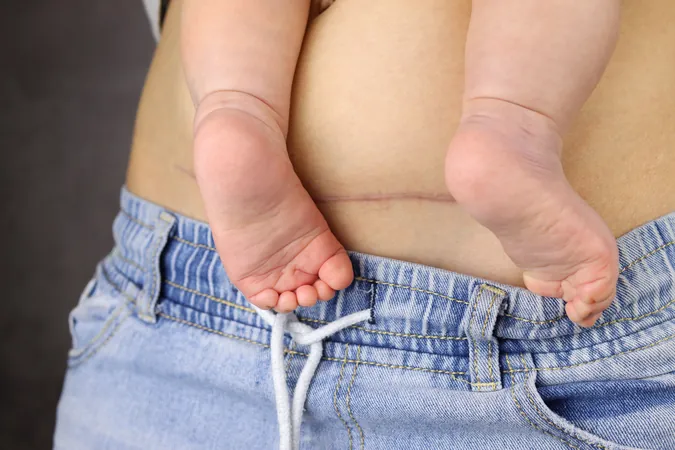
Staples vs. Sutures: Which is Better for C-Section Closure in Obese Patients?
2025-07-29
Author: Daniel
A Groundbreaking Study Unveils Surprising Results
Recent research has revealed that there's no clear winner when it comes to post-cesarean skin closure methods for obese patients. In a study published in *Pregnancy*, experts found that metal staples and subcuticular sutures yield similar rates of wound complications, surgical site infections, and wound separation.
Rising Cesarean Delivery Rates and Obesity Concerns
With cesarean deliveries accounting for over 32% of births in the U.S. in 2021, the discussion surrounding safest closure methods is more vital than ever. As obesity rates climb—defined as a body mass index (BMI) of 30 kg/m² or higher—concerns about increased surgical risks post-delivery surge.
What Previous Studies Suggested
While earlier research leaned towards subcuticular sutures as the safer option—linked to lower wound complication rates—recent randomized controlled trials contradict this, suggesting that staples don't lead to higher complication rates in obese patients.
Investigating the Best Practices
Conducted as a systematic review and meta-analysis, the study scrutinized existing literature up until November 30, 2022. It aimed to clarify the best method for skin closure in obese individuals undergoing cesarean sections. Investigators meticulously sifted through databases and assessed additional gray literature.
Study Insights and Methodology
Eight randomized controlled trials, involving a total of 1,748 participants, made the cut for comprehensive analysis. Reviewers noted these studies were of high quality, exhibiting minimal bias.
No Significant Differences in Complication Rates
Findings revealed a complication rate of 13.6% among those using staples compared to 12.1% for sutures—a difference that proved statistically negligible. When assessing surgical site infections, staples displayed a lower rate of 5.2% versus 10.5% with sutures, yet the overall impact was still minimal.
Still No Definitive Recommendations
With moderate certainty regarding wound complications and heightened certainty regarding wound separation and infections, the researchers concluded there was no significant distinction between the two closure methods. Consequently, they stated, 'no definitive recommendation can be made regarding the optimal method of post-cesarean skin closure in obese patients.'



 Brasil (PT)
Brasil (PT)
 Canada (EN)
Canada (EN)
 Chile (ES)
Chile (ES)
 Česko (CS)
Česko (CS)
 대한민국 (KO)
대한민국 (KO)
 España (ES)
España (ES)
 France (FR)
France (FR)
 Hong Kong (EN)
Hong Kong (EN)
 Italia (IT)
Italia (IT)
 日本 (JA)
日本 (JA)
 Magyarország (HU)
Magyarország (HU)
 Norge (NO)
Norge (NO)
 Polska (PL)
Polska (PL)
 Schweiz (DE)
Schweiz (DE)
 Singapore (EN)
Singapore (EN)
 Sverige (SV)
Sverige (SV)
 Suomi (FI)
Suomi (FI)
 Türkiye (TR)
Türkiye (TR)
 الإمارات العربية المتحدة (AR)
الإمارات العربية المتحدة (AR)